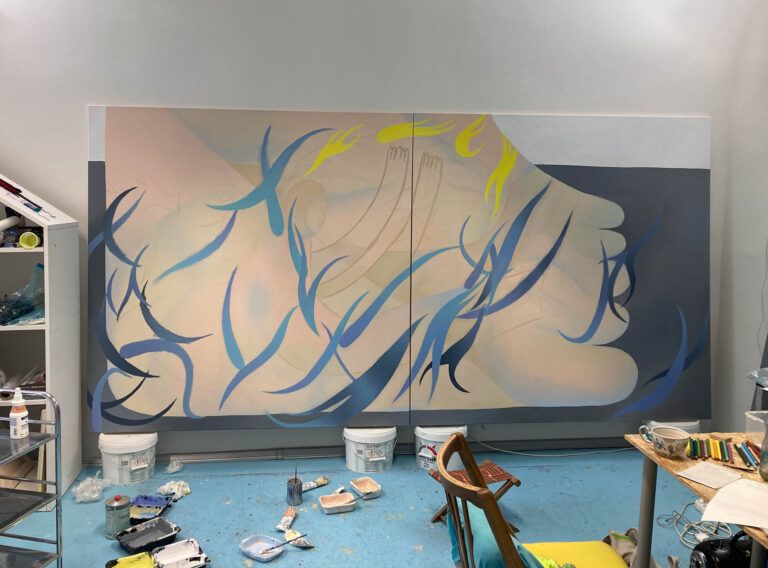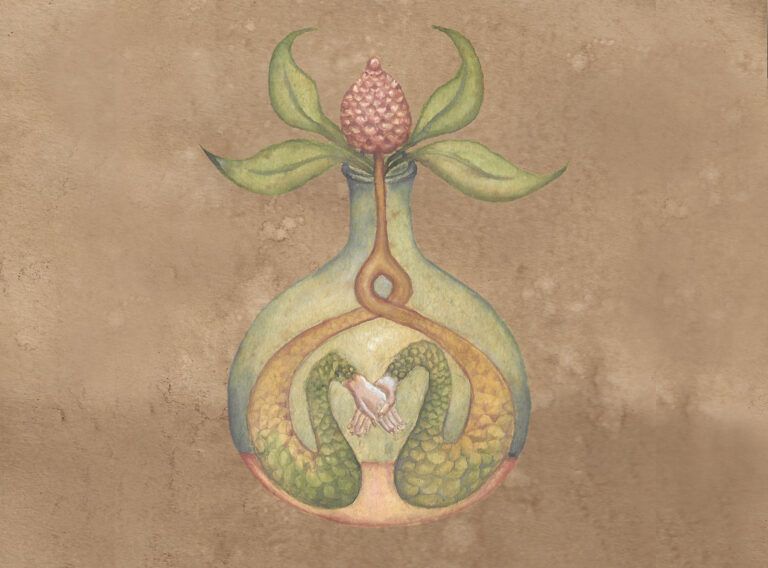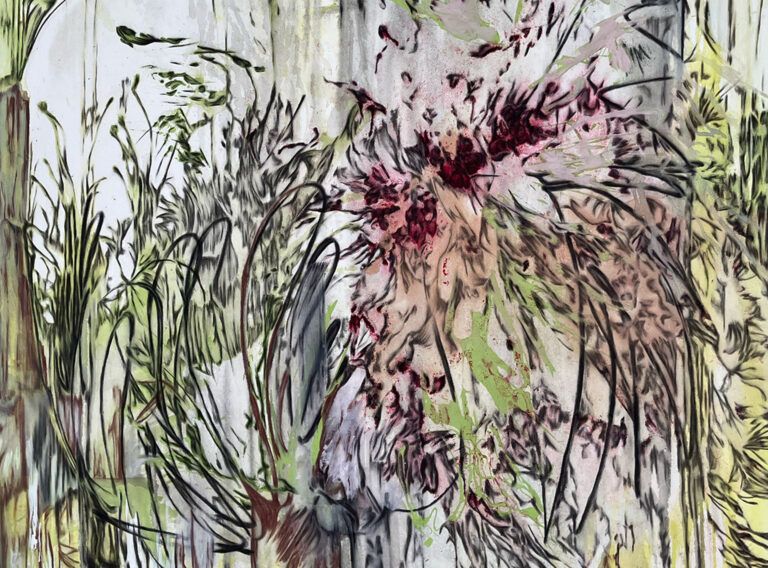PASTORAL /
An excerpt from a an accompanying text from Theo’s exhibition at Eduardo Secci Contemporary in Florence, Italy, curated by THE SWAN STATION (Luca Pozzi):
In Pastoral, 2019 (video game), Triantafyllidis constructs a hybrid virtual expanding landscape, a field of hay brushed by golden sunlight. The player finds himself as a muscular Ork character in the middle of the field together with an antagonist presence that relentlessly follows his every step as a contemporary version of an ancient minotaur. The character feels strangely out of place in this setting, seemingly musing or enjoying a short break before yet another battle. Using a standard gamepad, the player can explore the landscape to find idyllic moments under the sound of a melodic lute. An anti-game of sorts, it denies the player any dramatic moments or interactions and rather has them contemplate the bucolic calmness. But a sense of underlying violence remains, perhaps embedded within the very medium of the video game.
In Self Portrait (Reclining Ork), 2019, a tapestry woven from a screenshot of the same character, represents the Ork flirtatiously staring at the viewer. Caught in a moment of reflection, the artist is intimidating and tender at the same time. The gender-ambiguous avatar has been the virtual manifestation of Theo on his previous series of works titled “Role Play”, a year-long performance in Virtual Reality where him as Ork produced a series of augmented sculptures and paintings. The Ork character now exits the artist’s studio, for a moment freed from the burden of labor, an idealized being in conflict-free coexistence with nature, representing through the tapestry one of the possible proofs of its analog materialization. Materialization that continues, through a site-specific installation, that includes a physical hay sandbox and a simulated sunset, in order to allows a synesthetic and layered experience of the work.
The same approach is implemented by Triantafyllidis by inhabiting a personal fantasy, like Marie Antoinette playing milkmaid in her private rustic retreat, the Queen’s Hamlet, and opening it and sharing it with an IRL and an online audience. Theo decides to make his personal avatar, and one that he very viscerally relates to, available to a wider public, by making the game available as a free download. This gesture is not taken lightly. The artist maintains control over how the avatar behaves and by programming the freedom and constraint of the player interactions. A game of redundant seduction is played in layers, between avatar-player and between player-game designer.





STAPHILOCULUS /
A Virtual Reality experience that attempts to recreate the first known outbreak of Polywobbly Fervenitis. According to live footage found on the site in Joshua Tree, California, the depicted artist attempted to setup a complete VR rig under scorching sunlight. As suggested by the investigation, when the headset was exposed to the desert sun, its display had a chemical reaction that was somehow translated into a digital signal that started a computer virus. The computer virus, that had some kind of primal Artificial Intelligence, managed to mutate itself into a strain of bacteria, now known as Staphyloculus, that spreads through the use of Virtual Reality headsets. In this first incident, the artist was infected by the microorganism and after hosting it for a while, brought it back to Los Angeles and started the spread of Polywobbly Fervenitis. The ability of this sentient microorganism to freely transform from computer virus to real world bacteria has astounded the scientific community that is anxiously looking for a cure.
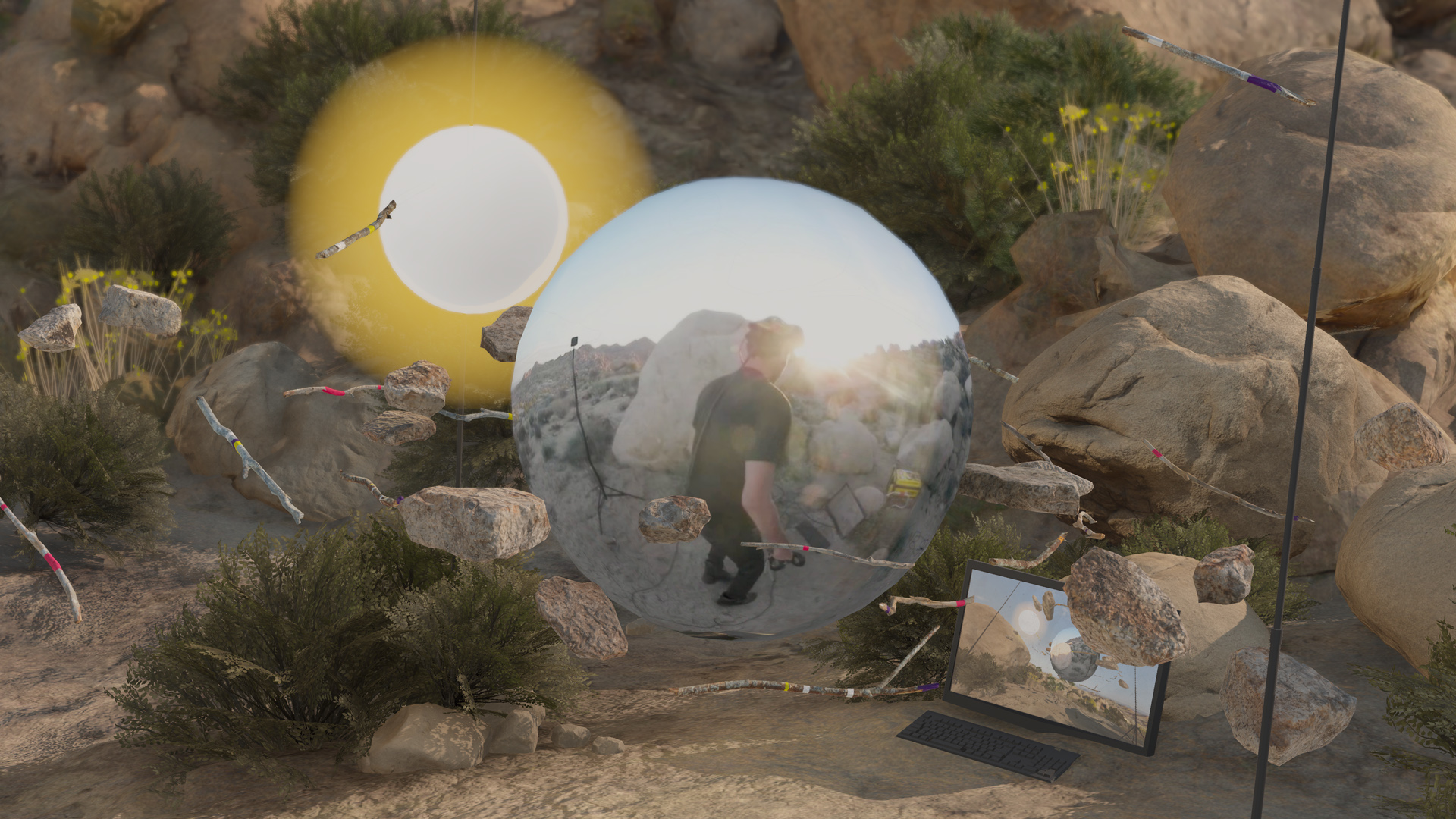
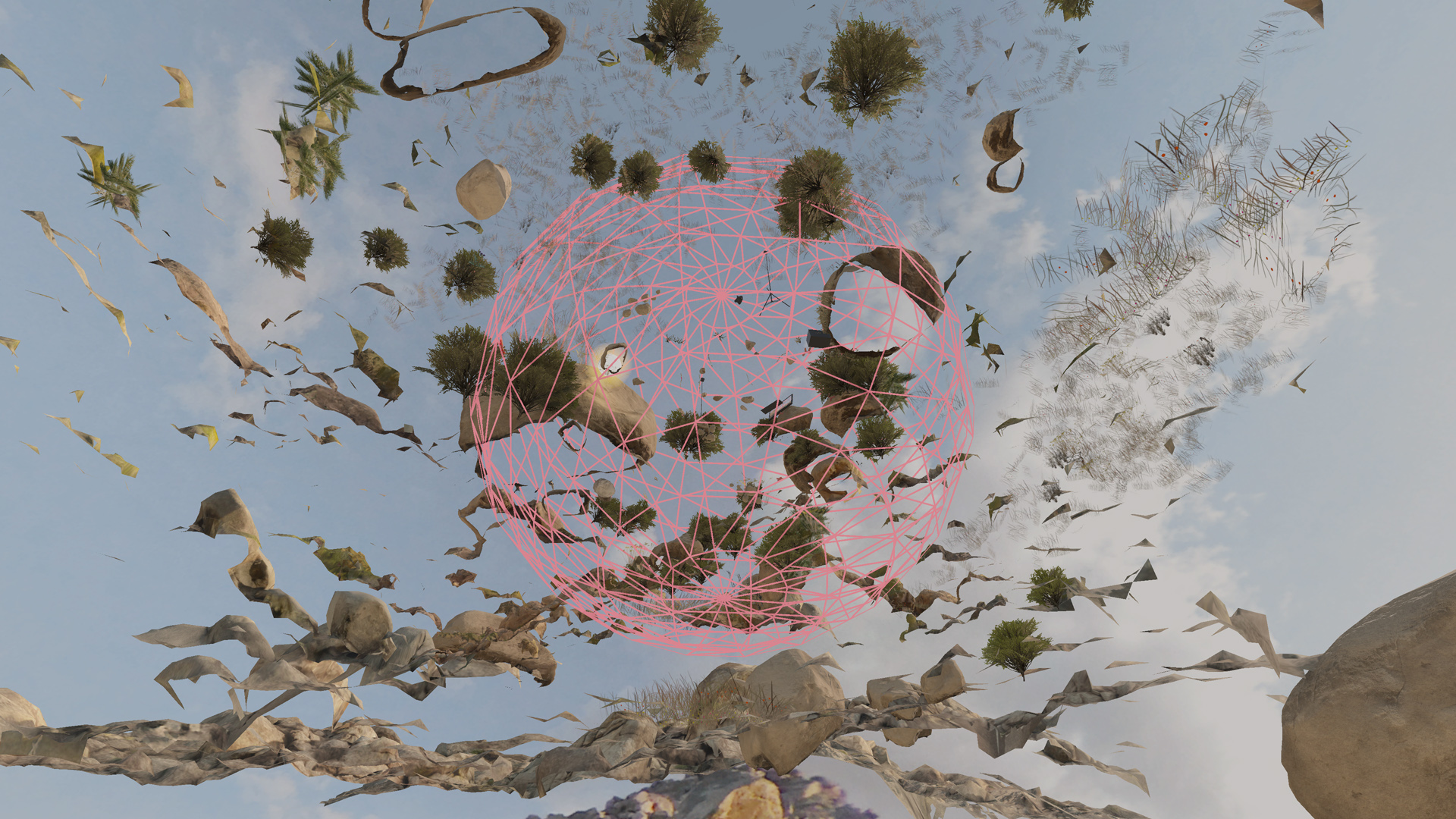


ABOUT THE AUTHOR /
Theo Triantafyllidis (b. 1988, Athens, Greece) is an artist who builds virtual spaces and interfaces for the human body to inhabit them. He creates expansive worlds and complex systems where the virtual and the physical merge in uncanny, absurd and poetic ways. These are often manifested as performances, virtual and augmented reality experiences, games and interactive installations. He uses awkward interactions and precarious physics, to invite the audience to embody, engage with and challenge these other realities. Through the lens of monster theory, he investigates themes of isolation, sexuality and violence in their visceral extremities. He offers computational humor and AI improvisation as a response to the tech industry’s agenda. He tries to give back to the online and gaming communities that he considers both the inspiration and context for his work by remaining an active participant and contributor.
He holds an MFA from UCLA, Design Media Arts and a Diploma of Architecture from the National Technical University of Athens. He has shown work in museums, including the Hammer Museum in LA and NRW Forum in Dusseldorf, DE and various galleries such as Meredith Rosen Gallery, the Breeder, Eduardo Secci and Transfer. He was part of Sundance New Frontier 2020, Hyper Pavilion in the 2017 Venice Biennale and the 2018 Athens Biennale: ANTI-. Theo Triantafyllidis is based in Los Angeles.
PASTORAL CREDITS /
Author / Theo Triantafyllidis
Photography / Monia ben Hamouda
Exhibited at / Eduardo Secci Contemporary
STAPHILOCULUS CREDITS /
Author / Theo Triantafyllidis
Sound Design / Holly Waxwing
On-Site team / Jenny Rodenhouse, Eli Joveta, Lander
3D Scanning and Modelling, Exhibition Design / Polina Miliou
Additional Photogrammetry / Régis Boissenin
Commissioned by / NRW-Forum Dusseldorf, DE
Check all Theo works at http://slimetech.org/


